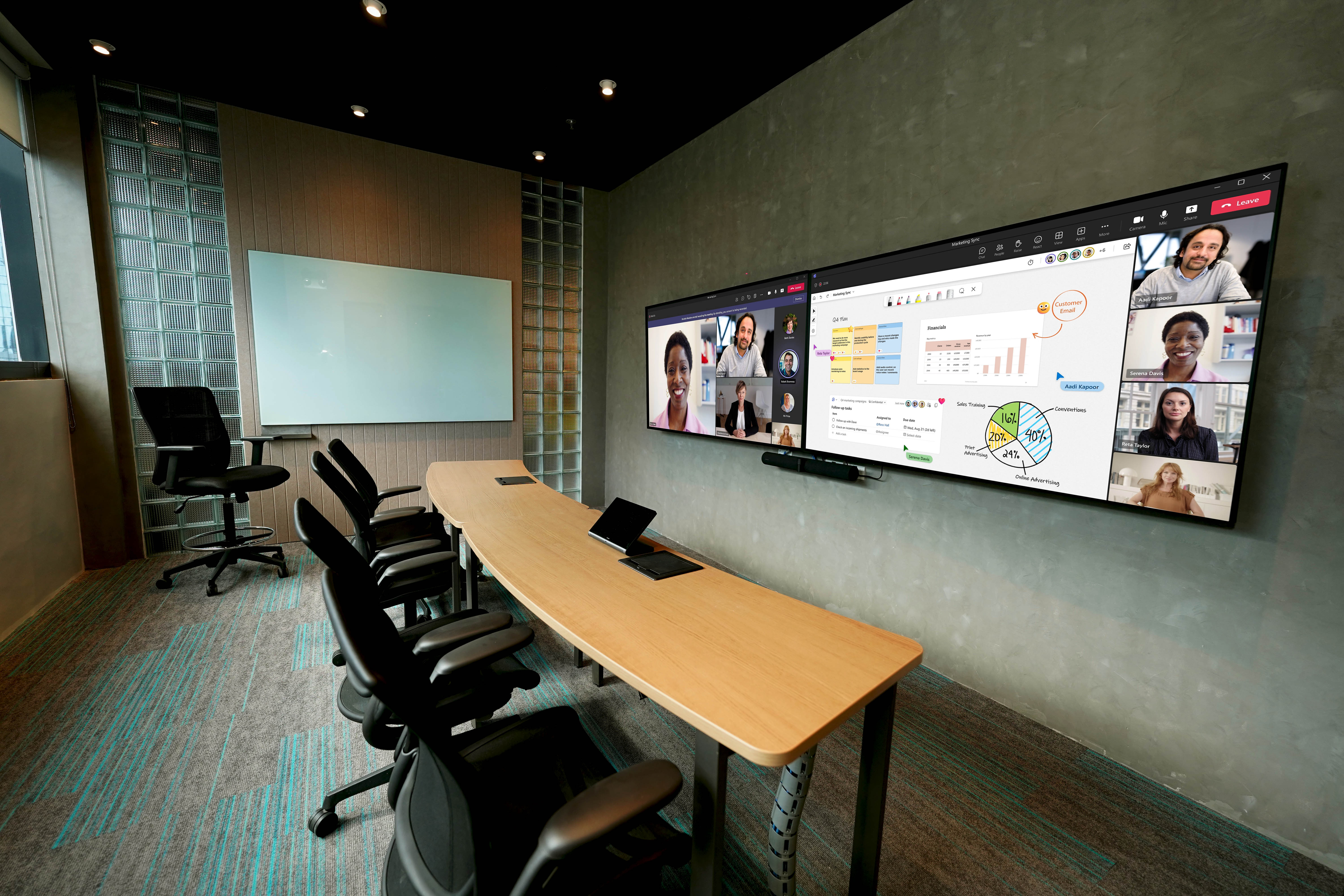AV Integration Solutions for Hybrid Work Environments: Best Practices

Initially introduced as an adaptive response to the uncertainties of the COVID-19 pandemic, hybrid working has since evolved into a defining aspect of contemporary corporate culture. This innovative approach is characterised by its emphasis on flexibility, cost efficiency, enhanced collaboration, and the ability to tap into a broader talent pool, making it an increasingly attractive option for companies.
At the heart of hybrid working is the empowerment of employees to choose where they work, whether that's within the traditional office setting or remotely. To ensure that effective collaboration and seamless communication thrive in this adaptable environment, organisations must harness technology. Notably, Audio-Visual (AV) integration stands out as a pivotal component of this transformation.
This article delves into the best practices for implementing AV integration solutions, shedding light on how companies can leverage technology to support the success of the hybrid work model.
AV Integration Solutions: Best Practices
To enable a smooth transition between in-office and remote work, here are some best practices and technologies that you should consider, including the use of Teams and integrated video conferencing solutions:
1. Teams as Your Unified Communication Hub

Microsoft Teams has emerged as a cornerstone of unified communication in the modern workplace. This versatile platform integrates various communication tools like video conferencing, chat, document sharing, and more. By incorporating Teams into your AV integration strategy, you create a centralised hub for all your communication needs. This ensures that both in-office and remote employees can easily connect, collaborate, and share information seamlessly.
2. Integrated Video Conferencing Solutions
Video conferencing is at the heart of effective communication in a hybrid work environment. Integrated video conferencing solutions, such as Microsoft Teams, Zoom, Cisco Webex, and others, provide a bridge between in-office and remote employees. These solutions allow all participants to join meetings, share screens, and collaborate in real time, regardless of their physical location. High-quality video and audio, along with robust security features, make these tools indispensable for modern businesses.
3. High-Quality AV Equipment and Business Tailored Conference rooms

Investing in high-quality audiovisual equipment is crucial for creating seamless communication experiences in remote work environments. Alongside AV equipment, the design and functionality of your conference rooms also demand attention. These spaces should be thoughtfully designed to support collaboration and productivity, equipped with ergonomic furniture, adequate lighting, and user-friendly technology interfaces. Whether it's within the confines of a well-equipped office conference room or the virtual space of remote workers, your AV setup should feature high-definition cameras, premium microphones, and immersive displays. By ensuring that your AV equipment and conference rooms are top-notch, it ensures that every meeting, whether in-person or virtual, provides a cohesive and engaging experience, making it feel as if everyone is in the same room.
4. Scalability and Flexibility
Your AV setup should be scalable to accommodate your organisation's growth and adaptable to changing needs. Be prepared to add more equipment, expand your network, or adjust configurations as your business evolves. Flexibility is essential in a dynamic work environment.
5. Network Reliability and Security
A robust and secure network is the backbone of your AV integration. High-speed internet connections, quality of service (QoS) settings, and robust security measures are essential for smooth data and video transmission while safeguarding sensitive information.
In the era of hybrid work environments, AV integration solutions play a pivotal role in maintaining seamless communication and collaboration between in-office and remote employees. By following the best practices and leveraging technologies like Teams and integrated video conferencing solutions, your organisation can ensure that work remains productive, efficient, and inclusive, regardless of where your team members are located. To find out more about AV integration, consult DVI Solutions - Singapore’s leading Audio Visual Communications and Collaboration Solutions Provider.
.png)
Inside the Narra Meeting Room: Smart Technology in 10 Seconds
.png)
Why Modern Offices Need Athena Analytics for Smarter Space Utilisation

